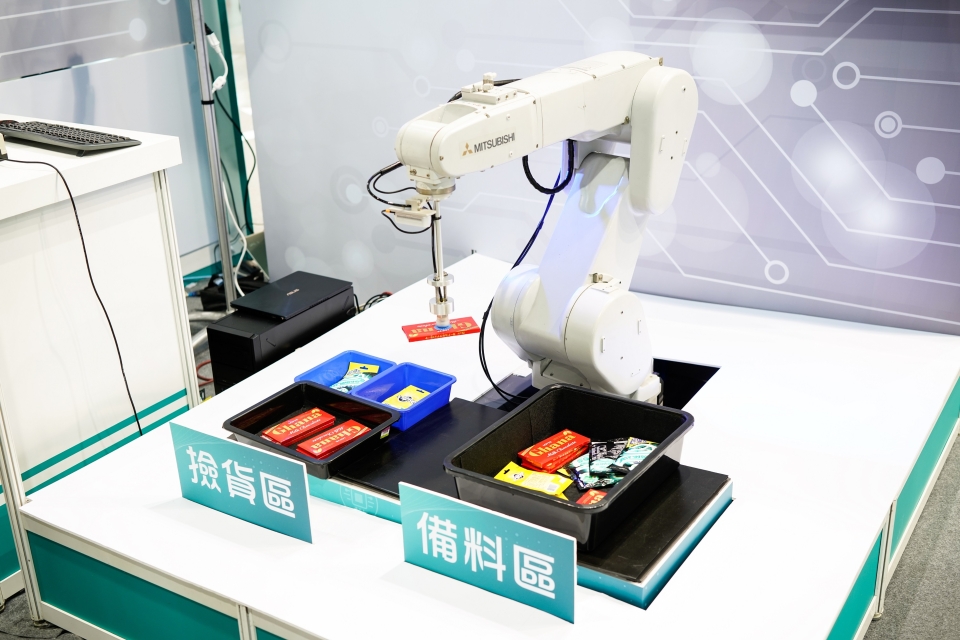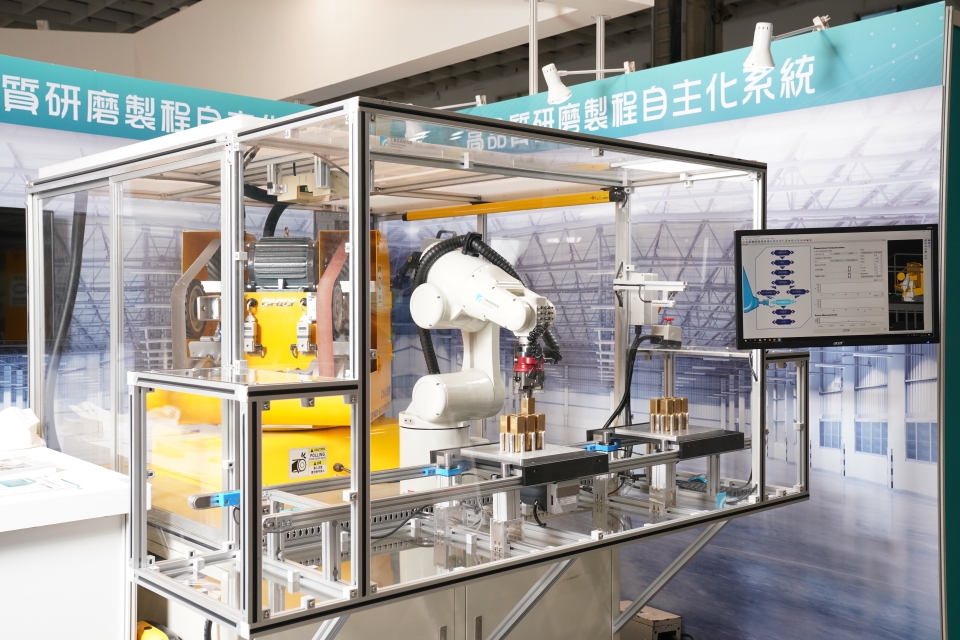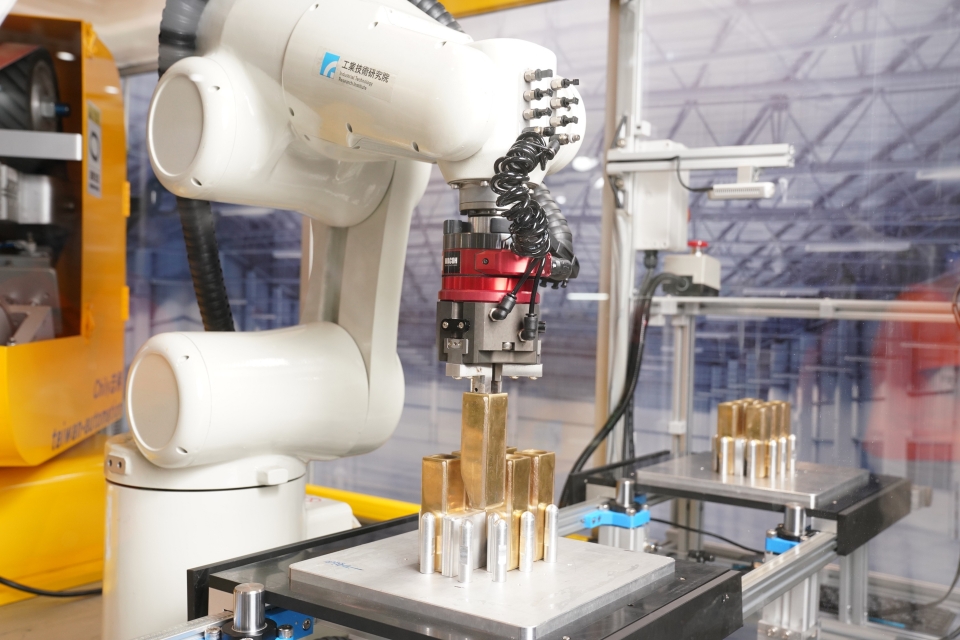Emerging Trends and Technologies in the Hand Tools Industry to Watch Out For
2021/02/01 | By Tingyu Chao
▓ Stephanie Chao
The COVID-19 pandemic that upended the global economy, production chains and society has brought forth or accelerated irreversible change. Among the latest trends, digital transformation and new related technologies in automation and AI are the hottest topics and in the most urgent demand among companies in the hand tools and hardware industries. How would a traditional sector like hand tools and hardware, attempt to bridge the digital and automation gap? The answer lies in a government agency and the technology research and development institution in Taiwan.
Digital Transformation
As previously written, the pandemic has forced businesses to either accelerate their digital transformation capabilities or struggle amid a tentatively resurging economy. In Taiwan, where business continues as usual, the urgency for digital transformation is less apparent and urgent, but at the same time, no less critical.
Economic Ministry Industrial Development Bureau (IDB), considered the nexus point between the industry and academia, revealed the hand tools and hardware industries' challenges in implementing new technology into among the most traditional sectors in Taiwan. IDB Metal and Mechanical Industries Division Chief Chang Shang-chun said the hand tool industry's internal challenges are low birth rate and lack of related and new technological talent. On the flip side, these are also the very issues that digital transformation can tackle.
The looming circumstance is because Taiwan's workforce has dwindled over the years due to a low birth rate. New graduates heading into the workforce are also more likely to seek jobs in popular industries, such as the electronics and semiconductor sectors, Chang said. In contrast, the more traditional hand tool firms are often small-and-medium enterprises (SMEs) and, admittedly, less appealing to fresh graduates. Also, Chang pointed out that many senior craftspeople are nearing retirement; thus, firms could see talent shortage from both ends of the talent spectrum in a few years. Employing digital optimization and transformation can help hand tool firms lessen the impact caused by the lack of a new workforce and the incoming retirement of its seasoned craftspeople.
With such a backdrop, it's no wonder that the hand tools sector is more progressive in adopting new technologies among the metals and hardware-related fields, Chang said. Hand tool firms that have moved on from hand-written orders to digitalized systems make up 90%; firms that have embraced digital optimization that improves production efficiency make up 70 to 80%. Firms like Redai Precision Tools and Proxene Tools that have undergone digital transformation, including business model adjustments, make up only approximately 30% of the industry.
Chang said the hand tool's progressiveness is mainly due to the IDB-led initiative program that ended last year, which saw Taiwan's robotics maker Hiwin Technology assisting the hand tools industry and other traditional sectors in making the digital leap. Redai Precision and Proxene Tools are among the hand tool firms that partook in the project.
The IDB-led digital transformation project prompted Redai Precision Tools to invest NTD$800 million to build a new factory in the Dapumei Precision Machinery Park, upgrading facilities to include smart storage and flexible production lines. For instance, the new smart manufacturing capabilities have sharply helped shorten previous mold-changing time from 24 minutes to only 100 seconds, and processing times from 30 days to only seven days. Chang said that amid the pandemic, U.S. clients ended up going to Redai with a huge order to fulfill due to a booming stay-at-home economy, which Redai was able to accept due to its new smart production capabilities.
The initiative is two-pronged; the first is to help firms with decent digitalized capabilities and improve upon that foundation, including Redai and Proxene. The second is to assist firms that are just beginning to digitalize their production systems by implementing a digital order system. Firms like Redai and Proxene are leading the industry, Chang said, and the fact that these firms are profiting from automation and digitalization will spur other firms to follow suit. The initiative also makes it mandatory for the top-tier firms to offer transparency in their digitalization work, which helps bolster the entire industry.
In recent years, IDB has become the nexus point for the hand tools industry by connecting the industry and academia sector resources. For instance, firms looking to bolster their technological development can reach out to IDB, which would connect them to related universities with R&D capabilities. By prioritizing product added-value and quality, Chang said the government hopes to help steer towards the German model of globally-renowned craftmanship.
New Technologies

To continue the discussion of implementing new technologies, data revealed by the International Federation of Robotics (IFR) indicated that companies have been reevaluating risk management of their production supply chain under the COVID-19 pandemic. Many have chosen to accelerate the internal progress of introducing robotics to bolster the manufacturing industry's production, promoting robotic technologies, and developing smart automation systems. The IFR estimates that between 2020 to 2022, there will be approximately 40 thousand industrial-grade robots operating in factories around the world.
Taiwan's hand tools industry began the first steps towards digitalization in 2005 with competitive-priced digital tools, said Taiwan's Industrial Technology Research Institute (ITRI) Mechanical and Mechatronics Systems Research Laboratories Chief Huang Shu. He added that at present, the pursuit of automation and digital transformation aims to shorten the talent and labor gap to lessen the impact on hand tool firms. Taiwan's firms are often SMEs and lack the scale and resources that larger companies may have.
The COVID-19 pandemic especially made the aforementioned issues more apparent, Huang said, as the sector has been losing talent, struggled to attract said talent, and with border restrictions in place, lack new migrant workers coming in to fill the gap.
Still, firms can easily lose the wealth of knowledge and experience as hand tool craftspeople begin to retire, and fewer people willing to enter the industry. Huang said hand tool firms could employ ITRI's newest technologies to preserve the knowledge through automation, software, and AI.
These new technologies were part of the 10 R&D project results presented by ITRI at the 2020 Taipei Automation Intelligence and Robot Show. Among the projects is the world's first "AI Auto Annotation Application: Robot Random Bin Picking" that accurately engages in bin picking; "RobotSmith: Advanced Robotic Grinding and Polishing System," that helps factories manufacture a range of products without having to halt the production line.
The current robotic arms on the market cannot learn what parts to select, making them unable to pick out the necessary parts and materials quickly. The AI Auto Annotation Application can automatically collect and label data and use a variety of AI recognition imagery to teach robots to access materials and collect the correct items. What would typically take an hour with human labor to label 25 images, using the system can boost that by 400 times with 10,000 images per hour. Also, the configuration time of traditional random bin picking machines usually requires 30 days to complete, while ITRI's system would shorten that to one day.
By even automating the AI recognition imagery programming, Huang said this ensures that the SMEs can reduce the need to hire new technical talent to maintain and train the AI systems. This resolves the issue where research and academia-designed AI systems cannot meet the requirements for industry-use.
The design for RobotSmith also aims to help companies retain diverse manufacturing without the need to halt the assembly line to switch out equipment. It is also the first advanced robotic grinding and polishing system, reducing actual grinding error by simulating the robot's grinding path by combining the cyber-physical system (CPS) with force sensors. The system maps out the robot's operational path to lower the error margin for real-time grinding operations, minimalizing it within 1mm. The system's simulated grinding force is also tested at 80% accuracy. When factories introduce a new workpiece into the production line, the assembly line can carry on without halting as the system can automatically detect and identify the new workpiece. RobotSmith removes the need for human operators, as it can automatically detect new parts or map out new grinding paths on its own, enabling companies to roll out flexible low-volume high-mix production quickly.
The next challenges for ITRI are two-fold, the first being to improve both technologies further, Huang said, pointing out that the difference between, say, 80% and 85% accuracy lies in optimizing and tuning the program and robots. In the past, achieving the current technologies would take several years, but with the experience gained, Huang believes they would shorten the R&D gap. The second is finding system integrators (SI) to take ITRI's technology and close the gap with companies in need of such new systems, Huang said. ITRI was the main contributor of new system-based solutions in the IDB-led initiative, where Hiwin Technology became the SI by taking new technologies and offering counseling to hand tool companies.






